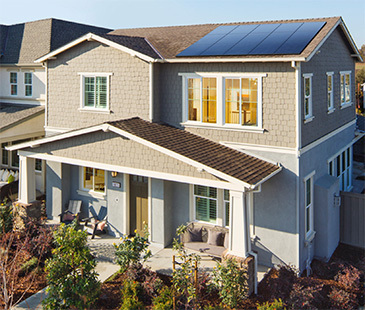EV Charging FAQ for Multifamily Construction
EV Charging FAQ for Multifamily Construction
EV Charging FAQs for multifamily developers and builders in the new home construction industry. Currently in California and elsewhere, code requirements mandate a small percentage of multifamily parking areas be designated as "EV ready."
What kind of EV charging is appropriate for my multifamily community?
Electric vehicle adoption is growing and here to stay. Multifamily developers can add EV charging as an amenity for their residents, and potentially leverage it as a long-term revenue stream. Builders can 1) make a percentage of tenant parking areas “EV ready” to satisfy immediate codes; 2) install a few Level II EV chargers in communal parking areas, or 3) embrace a more comprehensive plan for smart EV charging/billing to spread throughout the community. SunPower can help builders identify what is best for you, based on your community.
What percentage of parking areas are necessary for today and into the future?
Currently in California and elsewhere, code requirements mandate a small percentage of multifamily parking areas be designated as “EV ready” (typically 5%-10% depending on the code cycle). Exactly what EV-ready entails is a bit open for interpretation. Nonetheless, with the growth projections for electric vehicle sales, many multifamily developers are preparing for widespread EV adoption and setting up electrical infrastructure for future expansion.
Are there ways to prepare the infrastructure now for future retrofit?
Yes. Many multifamily developers are opting to prepare the necessary infrastructure (conduits, pull boxes, breakers, electrical panels, etc.) for future EV expansion and retrofit. The time to incorporate this infrastructure is well in advance of the early construction cycle before foundations and hardscaping are poured.
Who pays for the EV energy bills and how are they metered?
Some multifamily developers are individually wiring EV charging to assigned parking places and associating the meters and corresponding bills to the respective tenant. Others are opting to deploy smart EV charging and load management software to recuperate the charges directly from each driver. Under this scenario, the multifamily owner applies the funds collected toward a house account meter, often offset in some part by solar generation credits. No matter the situation, if setup appropriately, offering EV charging can be an amenity that attracts renters to the community and potentially introduces a new revenue stream for the owner.
Is there a way to capitalize on this trend?
Yes. By incorporating smart EV charging and load management software it is possible to recuperate the charges directly from each driver. Even more, in some locations, these meters can often be offset in part by applying solar generation credits. As a result, depending on the rate charged to drivers and the total amount of solar credits applied to the account, it’s possible for the owner to attain profitable net operating income while still offering an attractive amenity for tenant EV drivers.
Can solar generation go hand-in-hand with smart EV charging & billing?
Yes. By incorporating smart EV charging and load management software, the amortized cost of solar is typically well below the price that can be charged/billed to EV drivers. Depending on the rate charged to drivers and the total amount of solar credits applied to the account, the owner can potentially attain profitable net operating income while still offering an attractive amenity for tenants who are EV drivers.
Related Posts

